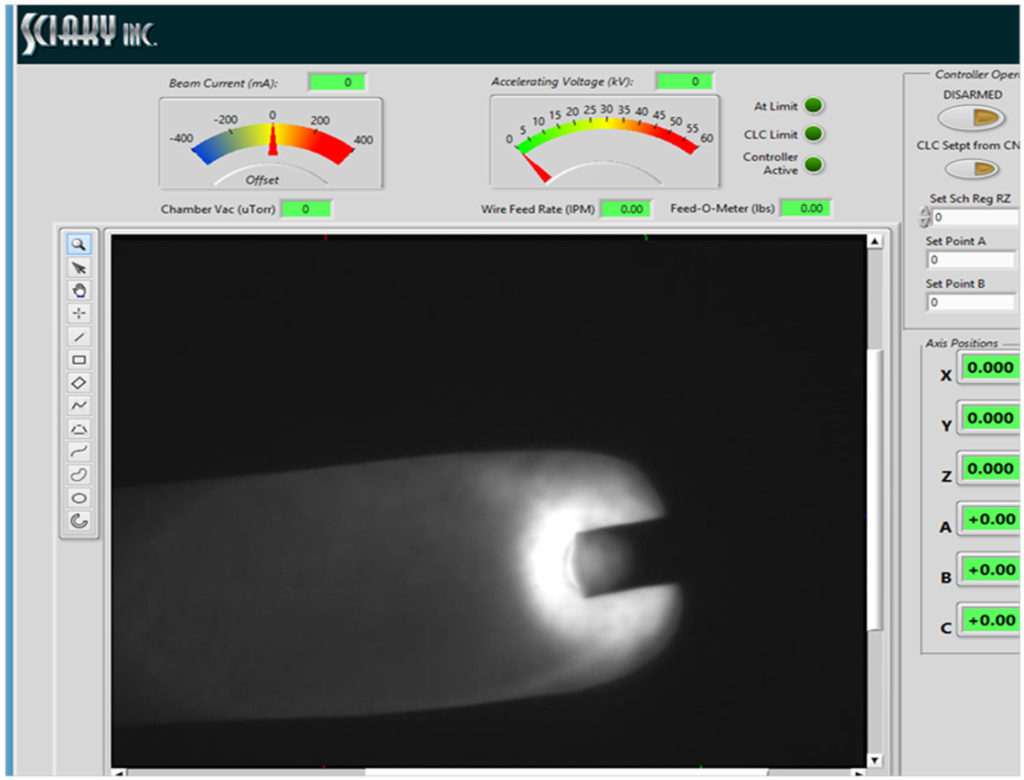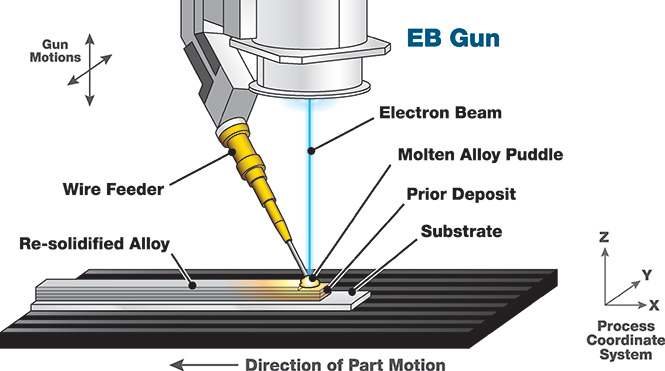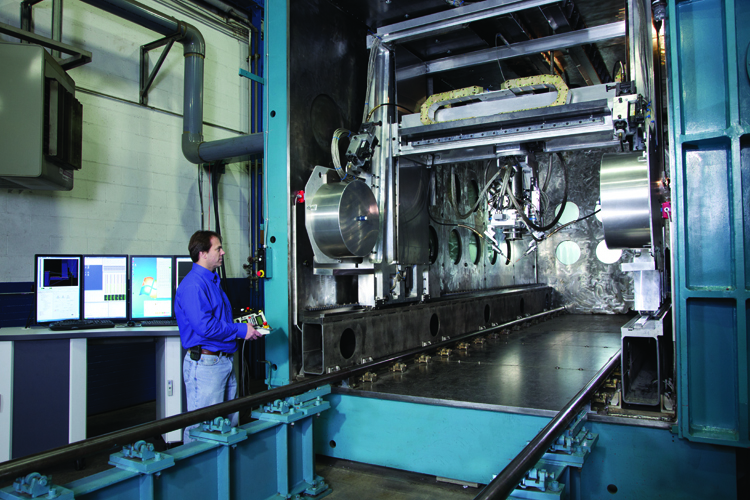Sciaky has just gotten a NASA Small Business Innovation Research (SBIR) Award in order to use machine learning to improve fault detection in Ti-6Al-4V parts made with the company’s Electron Beam Additive Manufacturing. Through defect identification and mitigation, the firm wants to improve its Interlayer Real-time Imaging and Sensing System (IRISS) for better in situ process monitoring.
“Sciaky is proud to partner with NASA and enhance process control for titanium 3D printing. This new capability will further solidify why EBAM is at the forefront of industrial additive manufacturing advancements,” Scott Phillips, President and CEO of Sciaky, said.

Sciaky is a subsidiary of PSI (Philips Service Industries), a service company with over $150 million in approximate revenues. Their EBAM technology is a high deposition directed energy deposition (DED), ideal for turbine blade repair, rejuvenation of complex components, wing spars, missile parts, chassis components, and airframe elements. Sciaky can build parts over five meters in length in titanium, tungsten, tantalum, niobium, steels, and alloys of copper and steel.

Because it uses inexpensive wire feedstock, parts made with EBAM are relatively inexpensive. The surface finish is rough and the majority of components will be CNC-d for smoothness and to reach final tolerances. EBAM is a relatively cost-effective build technology that can be used in conjunction with existing CNC equipment. Indeed you can add a Sciaky gun to your CNC machine.
IRISS is a key component of Sciaky’s ability to close the loop. Its many sensors monitor the deposition, melt pool and electron beam gun. The gun or wire feed speed will be adjusted on the fly to reduce errors according to the sensor input and IRISS’ algorithms “dozens of times per second.”
The idea is that every “gram of metal deposited experiences the same transition from wire, to liquid, to solid. This is to ensure consistent and reliable geometries, mechanical properties, microstructure construction and metal chemistry for medium to mega scale AM parts.” To have a NASA SBIR grant to improve the very functioning of your key monitoring application is very fortunate for the firm. Indeed the company has done a great job of getting SBIR awards over the years.
In the SBIR award itself, the firm says that the improved closed-loop control error detection will be used for aerospace parts, on-demand production as well as onsite fabrication for NASA. Specifically, they want to be able to tackle the following problem: “[A result of of the] high deposition rate with the vacuum is that the raw material is often vaporized at a high rate as well and this metal vapor condenses back into solid form on surfaces local to the process. Over time the condensate build up can become substantial and occurrences have been observed where the condensate gets dislodged and can fall into the melt pool. Sciaky has learned that in the case of EBAM deposition targeting Ti-6Al-4V, the condensate is made up of predominantly aluminum. This issue is a well-documented concern when processing alloys with elements having various vapor pressures in a high vacuum environment. If the condensate becomes entrapped within the molten pool, the local area no longer achieves the target chemistry or metallurgical properties. There has been at least one instance where the condensate provided a crack initiation site that resulted catastrophic failure of a preform in response to residual stress buildup.”

Sciaky wants to then track and identify when condensate occurs and then change the parameters of the machine to mitigate this. EBAM is already a very useful technology for large-scale metal parts and could be used for a lot of repair functions, as well. This award will only make it much more useful and reliable. Companies such as Braincreators already offer in-situ monitoring tools that use machine learning for fault detection. One reason behind VELO3D’s success is a tight grasp of in-process monitoring and analysis. Every major metal vendor is also working on some kind of in-situ process monitoring through cameras, sensors or both.
Machine learning, AI, and that entire arena does look like a frothy hype bubble. But, in the case of using machine vision to analyze, monitor, track and correct what is going on in the black boxes that are our printers, machine learning can be very valuable. More companies should be looking at how to use this tool to improve print results, improve QA and improve printer functioning over time. For too long, we’ve been relying on the “hard” engineering disciplines and have often looked at software as an inconvenience at best. In this case, however, much more reliable and repeatable 3D printing can be unlocked through using machine learning to close the loop.
Subscribe to Our Email Newsletter
Stay up-to-date on all the latest news from the 3D printing industry and receive information and offers from third party vendors.
You May Also Like
Precision at the Microscale: UK Researchers Advance Medical Devices with BMF’s 3D Printing Tech
University of Nottingham researchers are using Boston Micro Fabrication‘s (BMF) 3D printing technology to develop medical devices that improve compatibility with human tissue. Funded by a UK grant, this project...
3D Printing Webinar and Event Roundup: April 21, 2024
It’s another busy week of webinars and events, starting with Hannover Messe in Germany and continuing with Metalcasting Congress, Chinaplas, TechBlick’s Innovation Festival, and more. Stratasys continues its advanced training...
3D Printing Webinar and Event Roundup: March 17, 2024
It’s another busy week of webinars and events, including SALMED 2024 and AM Forum in Berlin. Stratasys continues its in-person training and is offering two webinars, ASTM is holding a...
3D Printed Micro Antenna is 15% Smaller and 6X Lighter
Horizon Microtechnologies has achieved success in creating a high-frequency D-Band horn antenna through micro 3D printing. However, this achievement did not rely solely on 3D printing; it involved a combination...





























